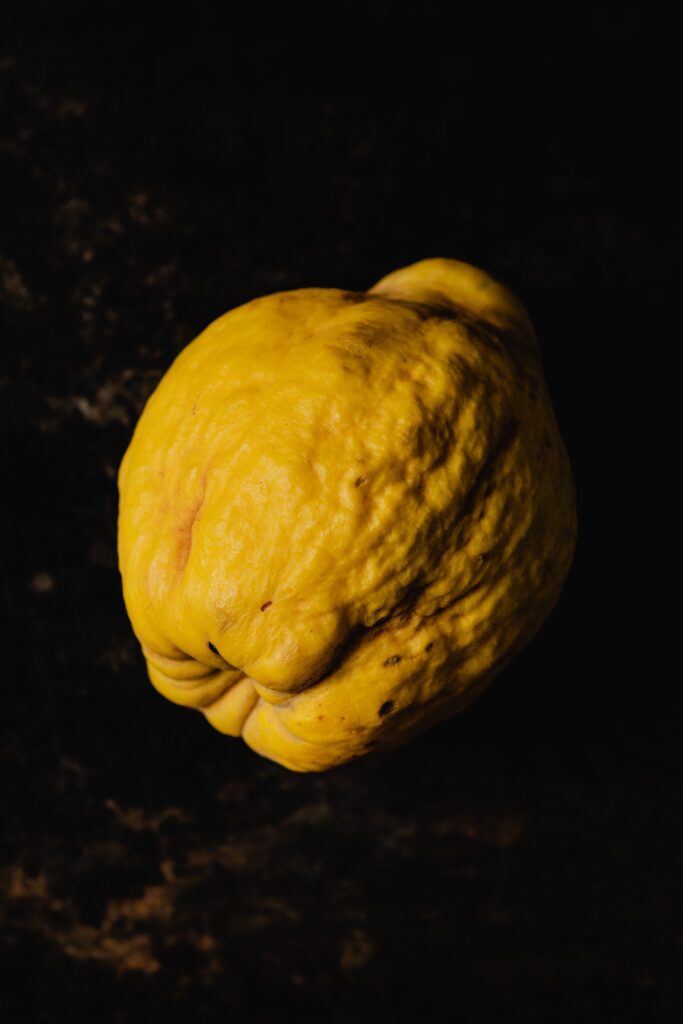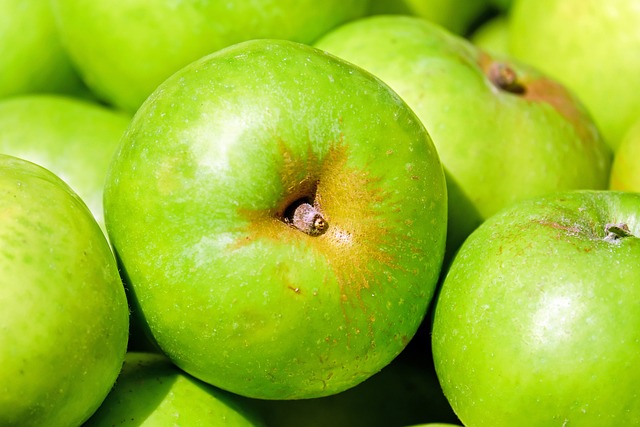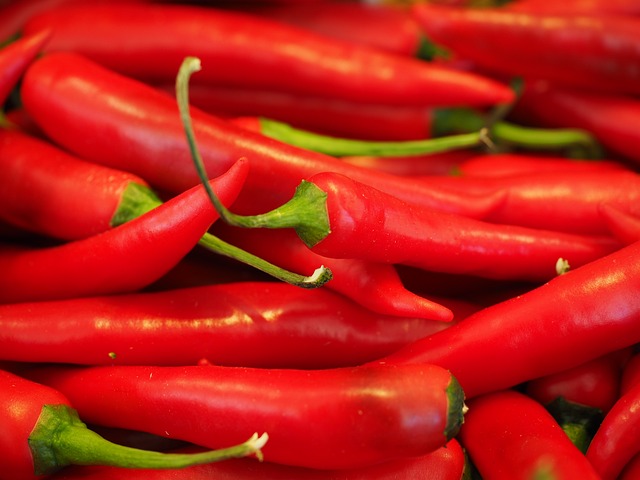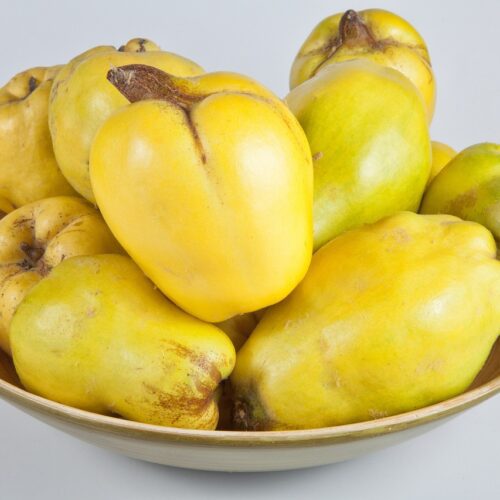Move over, apricot and raspberry jams – there’s a new spread in town, and it’s got the perfect balance of sweet and tart. Introducing quince jelly, the latest must-have condiment that can perform sweet as well as savoury magic! It’s the perfect condiment to have on hand since it pairs well with so many different foods.

What is quince?
Quince is a member of the rose family and bears a fruit similar to that of an apple or a pear. Rich in pectin, quince has been used for centuries to make jams and preserves.
They give off a unique aroma while cooking. It also has a unique texture, that makes it well-suited for preserves and jams. This golden-yellow fruit is tart when tasted fresh and is often cooked with sugar and spices to create excellent quince jelly, quince paste, quince marmalade and other quince preserves.
Unless you have your quince bush or know someone who does, it can be difficult to find. Ask at farmers’ markets or greengrocers as they may be able to source some for you or search online.
When you do get some of the golden yellow fruits, then store them first for a few weeks so that they are fully mature or ripe when you set out to make this jelly, for the best outcome. You will also get the bonus of their delicious aroma over this time.
What is quince jelly?
Quince jelly and quince jam share some similarities in their making process, as both involve boiling quinces with sugar and lemon to create a thickened syrup.
However, the jelly requires the additional step of straining and further cooking to result in a smoother gelatinous texture that sets more firmly than quince jam.
It also often has a slightly lighter colour than the jam due to the straining of skins and seeds which is a defining step in making the jelly.
How to make quince jelly
The quince, an ancient fruit species, has a sweet and fragrant aroma when cooked and tastes similar to apples and pears. To make quince jam or jelly, the quinces need to be boiled and simmered over low heat until they become soft.
Afterwards, they must be strained through a sieve or muslin to separate the liquid from the solids. Sugar is then added to the liquid, which is heated until it reaches the desired thickness. Depending on personal taste preference, other ingredients such as lemon juice can also be incorporated.
As quinces naturally have a lot of pectin it should be relatively easy to achieve a set for this jelly. Once done cooking, the jelly should be transferred into sterilized jars for storage.
TIPS for homemade quince jelly
1. Choose ripe quinces with a sweet smell and uniform yellow colour for the best flavour. Allow them to rest in a cool place to mature further if needed.

2. If you only have a few quinces, then do consider adding an apple or two to make up any deficit, turning it into an apple and quince jelly!
3. Be careful not to overcook the quinces as the unique flavour will be lessened.
4. Set up the jelly bag assembly or muslin-lined funnel in such a way and place that you can leave this to stand for around 12 hours as it slowly drips.
5. Do NOT force the mixture against the jelly bag or muslin; do NOT scrap any thickened fruit residue from the outside of the jelly bag or muslin into the collected liquid. You are aiming for a beautiful clear jelly and not a cloudy one!
6. If you do not have time to complete the second cooking stage as soon as it’s done, then store the strained quince juice in the fridge or in the freezer until you can complete the jelly creation process.
7. You could use up the left-over fruit pulp to make some quince sweets – add sugar to the pulp according to taste, spread this out on an oven tray lined with grease-proof paper and leave to dry(up to 2 weeks) – then cut into cubes and enjoy as a treat.
8. You will probably not need all of the sugar as the amount of sugar added to the strained juice depends on the weight of the juice. You weigh the amount of juice and only add 3/4 of this weight in sugar to the mixture. (e.g. 375 g sugar for 500g juice).
Personalise your quince jelly creation
1. Add spices such as cinnamon, nutmeg, clove and star anise or vanilla to the quince jelly while boiling it.

2. Use chillies or jalapeños for a spicier version of quince jelly.
3. For a zesty flavour, add more fresh lemon juice or citrus zest when boiling the quince mixture.
4. Add ginger for a warming taste sensation in your quince jelly recipe.
5. Incorporate herbs like rosemary and thyme into the mix before cooking to give your jelly an aromatic twist!
Suggestions for enjoying this delectable jelly
1. Spread this tasty jelly over toast or muffins for a sweet breakfast treat.
2. Use it to glaze roast pork, duck, ham or chicken dishes. Or serve alongside game meats.
3. Add a spoonful of quince jelly to plain yoghurt for an interesting flavour twist and added sweetness. Stir through some cream cheese for a delicious dip.
4. Make quince and chilli jelly for a tangy spicy addition to cheese boards or charcuterie platters
5. Quince jelly makes for a unique tasty edible gift.
If you have never had quince jelly, then you are truly missing out. It is a delicious treat that can be enjoyed in so many different ways. Give quince jelly a try and you will make sure you find some more to enjoy.

Quince Jelly Recipe
Equipment
- Kitchen scales
- Chopping board and knife
- Large saucepan
- Long-handled spoon for stirring
- Potato masher
- Jelly bag or funnel/colander lined with muslin
- Large glass bowl
- Ladle
- Jam Funnel
- Clean, sterilised glass jars with sealable lids
- 2 small plates in the freezer, or a sugar thermometer
Ingredients
- 1-1.5 kg ripe quinces
- 1 medium lemon
- 1 kg white sugar
- Enough water to cover the fruits as it cooks
Instructions
- Wash the quinces, let them drain and then cut them into cubes that measure approximately 2 cm (or 1 inch) apiece. You don't need to worry about the time-consuming process of coring and peeling but cut out any bruised parts.Wash and juice the lemon.
- Place the quince pieces in a large saucepan and cover them with enough cold water so that they are submerged. Add the lemon juice. Bring to a boil over medium heat, then reduce the heat to low and simmer for 20-30 minutes until quinces are soft. Remove the mixture from the heat once the fruit is softened. If needed, use the potato masher to break up the fruits.
- Empty the fruit into the jelly bag or into the funnel lined with muslin over the large glass bowl and allow the liquid to drain through. Set this up in such a way that you can leave this to stand for around 12 hours as it slowly drips.
- Once the juices have drained, weigh the amount you have collected. Then weigh an amount of sugar that is 3/4 of the weight of the juice. Add them both to your pan.Gently heat the mixture, stirring well to encourage the sugar to dissolve completely.Allow it to simmer for about 10 minutes skimming off any foam (scum).
- Turn up the heat to bring the mixture to a rolling boil. After 5 min, start the process of testing for the set of jelly using the Wrinkle test and/or a temperature measurement on the sugar thermometer of 105 degrees Celcius (221F).Once a set is achieved remove the mixture from the heat.
- Use the jam funnel and then ladle the jelly into clean, sterilised glass jars. Wipe the rims with damp kitchen paper as needed and screw on the lids.
- Let the jelly stand to cool at room temperature for a least 24 hours, then label.
- This can be stored in a cool dark place for 9-12 months. Refrigerate once opened.
Notes
TIPS for homemade quince jelly
1. Choose ripe quinces with a sweet smell and uniform yellow colour for the best flavour. Allow them to rest in a cool place to mature further if needed. 2. If you only have a few quinces, then do consider adding an apple or two to make up any deficit, turning it into an apple and quince jelly! 3. Be careful not to overcook the quinces as the unique flavour will be lessened. 4. Set up the jelly bag assembly or muslin-lined funnel in such a way and place that you can leave this to stand for around 12 hours as it slowly drips. 5. Do NOT force the mixture against the jelly bag or muslin; do NOT scrap any thickened fruit residue from the outside of the jelly bag or muslin into the collected liquid. You are aiming for a beautiful clear jelly and not a cloudy one! 6. If you do not have time to complete the second cooking stage as soon as it’s done, then store the strained quince juice in the fridge or in the freezer until you can complete the jelly creation process. 7. You could use up the left-over fruit pulp to make some quince sweets – add sugar to the pulp according to taste, spread this out on an oven tray lined with grease-proof paper and leave to dry(up to 2 weeks) – then cut into cubes and enjoy as a treat. 8. You will probably not need all of the sugar as the amount of sugar added to the strained juice depends on the weight of the juice. You weigh the amount of juice and only add 3/4 of this weight in sugar to the mixture. (e.g. 375 g sugar for 500g juice).Personalise your quince jelly creation
1. Add spices such as cinnamon, nutmeg, clove and star anise or vanilla to the quince jelly while boiling it. 2. Use chillies or jalapeños for a spicier version of quince jelly. 3. For a zesty flavour, add more fresh lemon juice or citrus zest when boiling the quince mixture. 4. Add ginger for a warming taste sensation in your quince jelly recipe. 5. Incorporate herbs like rosemary and thyme into the mix before cooking to give your jelly an aromatic twist!Suggestions for enjoying this delectable jelly
1. Spread this tasty jelly over toast or muffins for a sweet breakfast treat. 2. Use it to glaze roast pork, duck, ham or chicken dishes. Or serve alongside game meats. 3. Add a spoonful of quince jelly to plain yoghurt for an interesting flavour twist and added sweetness. Stir through some cream cheese for a delicious dip. 4. Make quince and chilli jelly for a tangy spicy addition to cheese boards or charcuterie platters 5. Quince jelly makes for a unique tasty edible gift.Nutrition
Nutritional Disclaimer
All nutritional information is an estimate only, based on third-party calculations derived from an online nutritional calculator, Spoonacular API. The data provided is a courtesy and should not be considered a guarantee or fact. Each recipe and nutritional value will vary depending on the ingredients and brands you use, your measuring methods and portion sizes. For accurate results, we recommend that you calculate the nutritional information yourself, using a preferred nutritional calculator or advice from a nutritionist, based on your ingredients and individual processes.